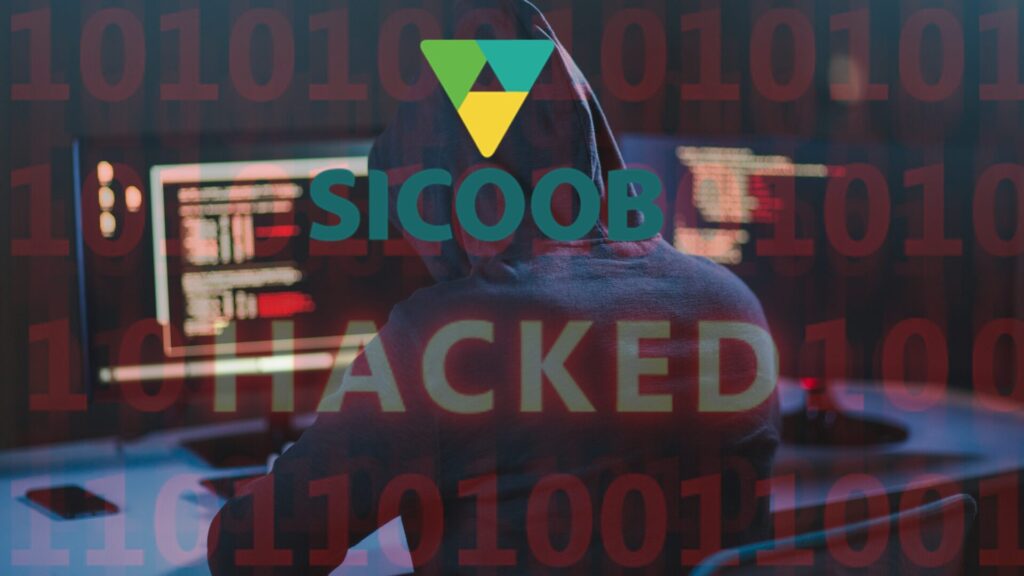Hacker Attack on Sicoob: Impacts, Response and How to Protect Yourself
The recent hacker attack on Sicoob raised serious concerns about cybersecurity in financial institutions.
This article discusses in detail what happened, the impact on customers, Sicoob's response, and valuable lessons that can be learned.

In recent years, cyber attacks have become more frequent and sophisticated.
The case of Sicoob serves as a warning to all financial institutions to strengthen their defenses and for customers to be more vigilant.
Read on to understand in-depth what happened, how to protect yourself against future attacks, and what you can do if you were affected by this incident.
What happened
At the beginning of [month/year], Sicoob suffered a significant hacker attack that compromised its customers' sensitive data.
The attack was discovered when Sicoob's internal systems detected unusual activity and unauthorized access to critical servers.
Cybersecurity investigators were immediately called in to analyze the situation and determine the extent of the intrusion.
Hackers used sophisticated methods, including phishing and exploiting vulnerabilities in outdated software, to gain access to Sicoob's systems.
Once inside, they were able to exfiltrate personal data such as names, addresses, phone numbers and financial information.
This incident highlighted the importance of keeping security systems up to date and training employees to recognize phishing attempts.
Impact on Customers
Sicoob customers were the most affected, with personal and financial information exposed.
This data breach can result in a range of problems for affected individuals, including identity theft, financial fraud, and direct monetary losses.
Many customers have reported receiving suspicious messages and emails trying to obtain more information or carry out unauthorized transactions.
In addition to the direct impact, customer confidence in the security of financial transactions was also shaken.
Concerned customers began to question Sicoob's ability to protect their information and many considered switching to other financial institutions.
Response from Sicoob
Immediately after discovering the attack, Sicoob implemented several containment and mitigation measures. Among them, the following stand out:
- Blocking unauthorized access: All suspicious access was blocked immediately to prevent further damage.
- Forensic Investigation: Security experts were called in to conduct a detailed analysis of the incident and determine the extent of the attack.
- Notification to Customers: Sicoob notified all affected customers about the data breach and provided guidance on how to protect themselves against fraud.
- Security Reinforcement: Additional security measures have been implemented, including software updates, security reviews, and additional employee training.
Technical analysis
Hackers used advanced techniques to infiltrate Sicoob's systems. A technical analysis revealed that the attack involved multiple phases:
- Recognition: Identification of vulnerable systems and collection of information about Sicoob's infrastructure.
- Exploration: Use of exploits to gain initial access to systems, often through phishing or exploitation of known vulnerabilities.
- Privilege Escalation: Once inside, hackers used techniques to escalate their privileges and gain control over critical systems.
- Data Exfiltration: Extraction of sensitive data and its transfer to servers controlled by hackers.
- Trace Coverage: Use of techniques to erase evidence and make detection and response to the attack difficult.
Lessons Learned
This attack highlighted several vulnerabilities that other financial institutions should be aware of. Among the main lessons learned are:
- Importance of Systems Update: Keep all systems and software updated to prevent exploitation of known vulnerabilities.
- Employees training: Train all employees to recognize and report phishing attempts and other social engineering techniques.
- Continuous Monitoring: Implement continuous monitoring and behavior analysis to quickly detect suspicious activity.
- Quick answer: Have a well-defined and regularly practiced incident response plan to minimize the impact of attacks.
Prevention Measures
To protect yourself against similar hacker attacks, it is crucial to adopt robust security measures. Some of the most effective strategies include:
- Multi-Factor Authentication (MFA): Implement MFA to add an extra layer of security to access.
- Data Encryption: Encrypt all sensitive data both at rest and in transit.
- Network Security: Use firewalls, intrusion detection and prevention systems (IDS/IPS), and network segmentation.
- Security Audits: Conduct regular security audits to identify and fix vulnerabilities.
- Data Backup: Maintain regular, secure backups of all critical data for quick recovery in the event of an attack.
Conclusion
The hacker attack on Sicoob serves as a reminder of the importance of cybersecurity.
Financial institutions must be constantly updating their defenses and customers need to be vigilant about their personal information. Stay alert and protect your data.
FAQ
- What should I do if my data was compromised in the Sicoob attack?
- Please contact Sicoob immediately for specific guidance. Monitor your financial accounts and consider using credit monitoring services.
- What measures is Sicoob taking to prevent future attacks?
- Sicoob has implemented a series of security measures, including system updates, employee training and strengthening its cyber defenses.
- How can I protect my personal information from hackers?
- Use multi-factor authentication, keep your software up to date, and be wary of suspicious emails and messages.
- Was the attack on Sicoob an isolated event or part of a larger trend?
- Although each attack has its particularities, there is a growing trend of cyber attacks against financial institutions around the world.
- What are the signs that my account has been compromised?
- Signs include unauthorized transactions, login notifications on unknown devices, and password change messages that you didn't request.

